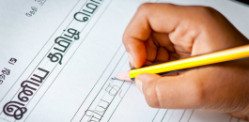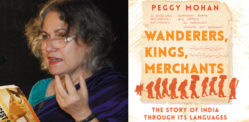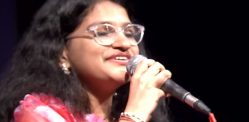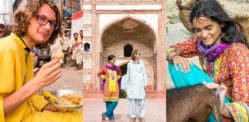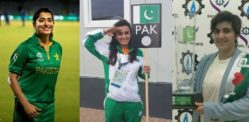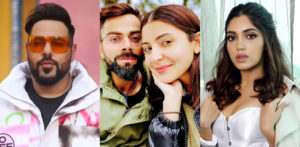Poetry began to reflect the speech of women.
Dialects vary between cities and are associated with specific groups, rather than with a language, which has a much broader use.
The languages and dialects are influenced by Indian, Persian, Arabic, and more!
They also differ in the number of users within the country, with Urdu being the predominant language.
Languages can reflect certain characteristics of a city as well as represent its history.
Here are five languages and five dialects used in the linguistically diverse country of Pakistan.
Key Terms

For instance, the sound “h” in “hat” is aspirated, similar to other words like “pat,” “top,” and “keep,” which are pronounced with an expulsion of air.
Dialect
A dialect is a variation of a language specific to a particular region or social group.
Indo-Aryan
This term refers to a subgroup of the Indo-European languages, including Sanskrit and its modern descendants spoken in India.
Indo-European
This family of languages is spoken across most of Europe and Asia, extending to northern India.
Irregular Past Participle
Irregular past participles are formed by changing a vowel, adding a new ending, or both.
Language
Language is a method of communication that is structured or conventional and conveyed through speech, writing, or gestures.
Naskhi
Naskhi is a style of Islamic handwriting developed in the 10th century.
Nasta’liq
This refers to a style of Persian calligraphy that flourished during the 15th and 16th centuries.
Phonology
Phonology is the study of sound patterns in a language and across languages.
Prefixes
A prefix is a word, letter, or number placed before another to alter its meaning.
Retroflex Sounds
Retroflex sounds are consonant sounds produced with the tip of the tongue curled back toward the hard palate.
Suffixed Pronouns
Suffixed pronouns refer to persons or things and can change form according to gender (masculine or feminine), number (singular or plural), and person (first, second, or third).
Suffixes
Suffixes are added to the end of a word to form a derivative, e.g., “-ation,” “-fy,” “-ing,” “-itis.”
Languages
 Balochi
Balochi
This language is spoken by approximately 4% of Pakistan’s population, primarily in Balochistan.
With around 5 million speakers, its reach extends beyond Pakistan to neighbouring territories such as Iran, Afghanistan, India, and Oman, among others.
Consequently, it is spoken by 6.6 million people across 11 territories.
Balochi is categorised into three main dialect groups: Eastern, Southern, and Western.
Pronunciation varies significantly among these dialects. For example, “ph” is generally pronounced as /f/ in the Eastern dialects but as /p/ in the Western dialects.
Balochi poetry, dating back to the mid-15th century, was later adapted to the Persian Nasta’liq script.
In the 18th century, a poet at the court of Mir Muhammad Nasir Khan of Kalat composed songs and poems that are still sung by Balochs today.
Pashto
Pashto is a member of the “Indo-European” languages.
Originally spoken by the Pashtun people, it became the national language of Afghanistan in 1936.
Approximately 35 million people speak Pashto, primarily in Afghanistan and Pakistan, with communities in Iran, Tajikistan, and the United Arab Emirates also using the language.
The language has borrowed elements from Greek, Saka, Parthian, and Persian, as well as from northwestern Indian languages, particularly the Prakrits, Balochi, and Sindhi.
These diverse influences have endowed Pashto with a unique retroflex sound, produced by curling the tip of the tongue against the roof of the mouth.
Pashto has assimilated many Persian words, yet it exhibits distinct differences, such as the replacement of the sound /n/ in Persian with /l/ in Pashto.
Additionally, Pashto has borrowed words from Tajik (a form of Persian) and Uzbek, further enriching its vocabulary.
Sindhi
Sindhi, an “Indo-Aryan” language, is spoken by 23 million people primarily in the Sindh province of Pakistan.
It also has a significant presence in the Las Bela district of Balochistan.
Following the partition of Pakistan in 1947-48, many Sindhi-speaking immigrants relocated to the Gujarat and Maharashtra states of India.
Due to the geographical isolation of Sindh in the lower Indus Valley, Sindhi has developed unique linguistic features.
For example, the consonants b, d, g, and j are pronounced with an indrawn breath. The vowel sounds in Sindhi are similar to those in most Indo-Aryan languages, illustrated by words like “gharu” (house) and “ghara” (houses).
Sindhi also features a number of irregular past participles, such as “ditho” (saw) from “disanu” (to see) and “muo” (died) from “maranu” (to die).
Additionally, the language employs suffixed pronouns, as seen in “atha-mi” (is mine) and “atha-si” (is his).
In 1853, the British colonial authorities standardized the language, leading to the predominance of the Sindhi-Arabic script. Unlike the Nasta’liq form, Sindhi is written in the Nashki script.
The Sindhi script comprises 52 letters, compared to 35 in the Urdu script, and includes special combinations of dots over consonants and a distinct nasal sound, with combinations such as bh, dh, th, and so on, which in Urdu appear as combinations of simple consonants with -h.
Shah Abdul Latif (1690-1752), a Sufi poet, is celebrated as a symbolic figure in classical Sindhi literature.
Urdu
Urdu is spoken as a first language by 70 million people and as a second language by over 100 million people. It serves as the official state language of Pakistan and shares a high degree of similarity with Hindi.
Originating in the 12th century from the Apabhramsha of northwestern India, Urdu became integral to the cultural fabric of Pakistan following the Muslim conquests.
Amir Khosrow (1253-1325), a prominent poet of his time, composed dohas (couplets), folk songs, and riddles in what was then known as Hindvi.
As a member of the Indo-Aryan language family, Urdu exhibits similar phonology and grammar to its linguistic relatives.
Its vocabulary is enriched by borrowings from Arabic and Persian, and it employs a modified form of the Perso-Arabic script known as Nastaliq.
While Urdu and Hindi share many sounds, variations exist, particularly in the pronunciation of short vowels.
Urdu distinguishes itself with the use of aspirated and retroflex stops, audible breath sounds that are characteristic of the language.
Moreover, Urdu incorporates a greater number of Perso-Arabic prefixes and suffixes compared to Hindi.
Examples include prefixes such as dar- (‘in’), ba-/baa- (‘with’), be-/bila-/la- (‘without’), and bad- (‘ill, miss’) and suffixes like -dar (‘holder’), -saz (‘maker’, as in zinsaz ‘harness maker’), -khor (‘eater’, as in muftkhor ‘free eater’), and -posh (‘cover’, as in mez posh ‘table cover’).
Punjabi
In Pakistan, Punjabi is spoken by 70 million speakers, predominantly in the Punjab province.
The Urdu script, which is written from right to left, is also used for writing Punjabi in Pakistan.
This script is known as Shahmukhi and is widely recognised in the country.
Additionally, Punjabi can be written in Gurmukhi, a script that belongs to the Indic family and is written from left to right.
Compared to India, Punjab in Pakistan is less homogeneous.
The language boasts many dialects, providing linguistic variety but also leading to opposition among Punjabi activists in Lahore against rival groups, such as those speaking Siraiki in the southwestern districts.
Nevertheless, the language celebrates literary traditions in both India and Pakistan, fostering a shared cultural identity.
This is exemplified in the works of many poets, such as the Muslim poet Waris Shah’s romance “Heer” from 1766.
Dialects
 Dhakaiya
Dhakaiya
Natives of Old Dhaka speak ‘Shobbash,’ a variant of the Dhakaiya dialect.
During the Mughal era in Bengal, Dhaka experienced an influx of people from various provinces in India. These newcomers adopted influences from Urdu, Persian, Hindi, and English.
The language’s origins can be traced back to the period when the British East India Company ruled over Bengal, then part of East Pakistan.
With the partition at the end of the British Raj, two new states were created: India and Pakistan. East Pakistan, covering much of what was historically known as Bengal, primarily spoke Bangla.
However, during a visit to East Pakistan in 1948, Muhammad Ali Jinnah, the Governor-General of Pakistan, declared that Urdu would be the sole state language.
The name ‘Shobbash’ is derived from the rice huskers who spent their days separating rice grains from their husks, a process known as ‘Kutta.’
This activity gave the community its name, ‘kuttis.’
Over time, the usage of this dialect has decreased due to urbanisation, migration, intercommunity marriages, and educational standardisation.
Today, younger generations predominantly speak Bangla in schools and madrasas.
Rekhta
“Rekhta,” meaning “scattered” and “mixed,” was a prominent form of poetry from the 17th century until the 18th century, before being superseded by Hindavi and later Urdu.
It regained popularity by the late 19th century.
Rekhta poetry is appreciated by Urdu speakers and is a common form of poetry.
It has been utilised in various poetic forms, such as Masnavi, Marsia, Qaseedah, Thumri, Jikri (Zikri), Geet, Chaupai, and Kabit.
Originally written in Persian, it was adapted over time.
The poetry also spread to North India, as depicted in a Sher (poem) by Mirza Ghalib.
In the 18th century, poetry began to reflect the speech of women, marking a departure from its initial focus on male voices.
The female counterpart of Rekhta is known as Rekthi, first popularized by the poet Sa’adat Yar Khan in his poem ‘Rangin.’
This gave female poets a voice, leading to the emergence of many notable female poets, such as the Lucknow poet Insha, who composed rekhtis.
Pothwari Punjabi
This dialect is spoken in the northern area of Pakistani Punjab.
The Pothowari dialect extends to the far south, including Jhelum, Gujar Khan, Rawalpindi, and the Murree Hills (north of Rawalpindi), and to the east towards Bhimber. Poonchi is located east of Rawalakot.
It also reaches into Azad Kashmir and Jammu.
Pothwari is prevalent in the plains around Rawalpindi. Hence, Pahari Pothwari means ‘hill language’.
This dialect represents a blend of Hindko and standard Punjabi.
It is known by several names, including Pahari, Pothwari, Pothohari, and Mirpuri.
In 1960, the construction of the Mangla Dam led to a significant displacement of Mirpuris, many of whom emigrated to the UK, bringing their culture and language with them.
Hindko Punjabi
This dialect, used in Northern Pakistan, follows the Punjabi Shahmukhi script for writing.
Primarily, it is spoken in the districts of Peshawar, Attock, Nowshera, Mansehra, Balakot, Abbottabad, Murree, the lower half of the Neelum District, and Muzaffarabad.
Incorporating elements of Punjabi and Saraiki, it bears similarities to Mirpuri and Pothwari and is notably spoken in the northwestern districts and adjacent regions of Khyber Pakhtunkhwa.
Several million people from various ethnic backgrounds speak this dialect.
However, the Hindko-speaking community is actively working to promote Hindko as a separate language.
According to DBpedia, “In the 2017 census of Pakistan, 4.65 million people declared their language to be Hindko.”
Distinguishing itself from other Punjabi dialects, Hindko employs a more pronounced phonology in its syntax.
This dialect is also known as Hindki. Speakers of Hindko may be referred to as Hindki, Hindkun, or Hindkowan.
Jhangochi Punjabi
Another dialect of the Punjabi language is spoken in Khanewal, Jhang, Faisalabad, and Chiniot. Jhangochi, one of the oldest dialects, is expressive and portrays a distinct characteristic of the Punjabi people.
Despite its spread from Bahawalnagar to the banks of the river Sutlej, it continues to celebrate traditional customs and culture.
It features in the famous romance stories of Heer Ranjha and Mirza Sahiba.
According to an article by Gursharn Singh, “It is spoken in the Bar areas of Punjab, i.e., areas whose names are often suffixed with ‘Bar’, such as Sandal Bar, Kirana Bar, Neeli Bar, Ganji Bar.”
While there are slight variations within the dialects, there are larger differences between languages.
Language can embody the heart of a city’s culture as well as its people.
This form of communication varies across the country and carries distinct histories in different areas.







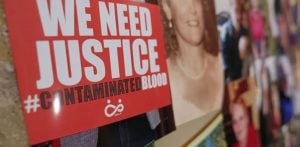






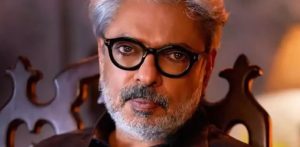





































 Balochi
Balochi Dhakaiya
Dhakaiya
